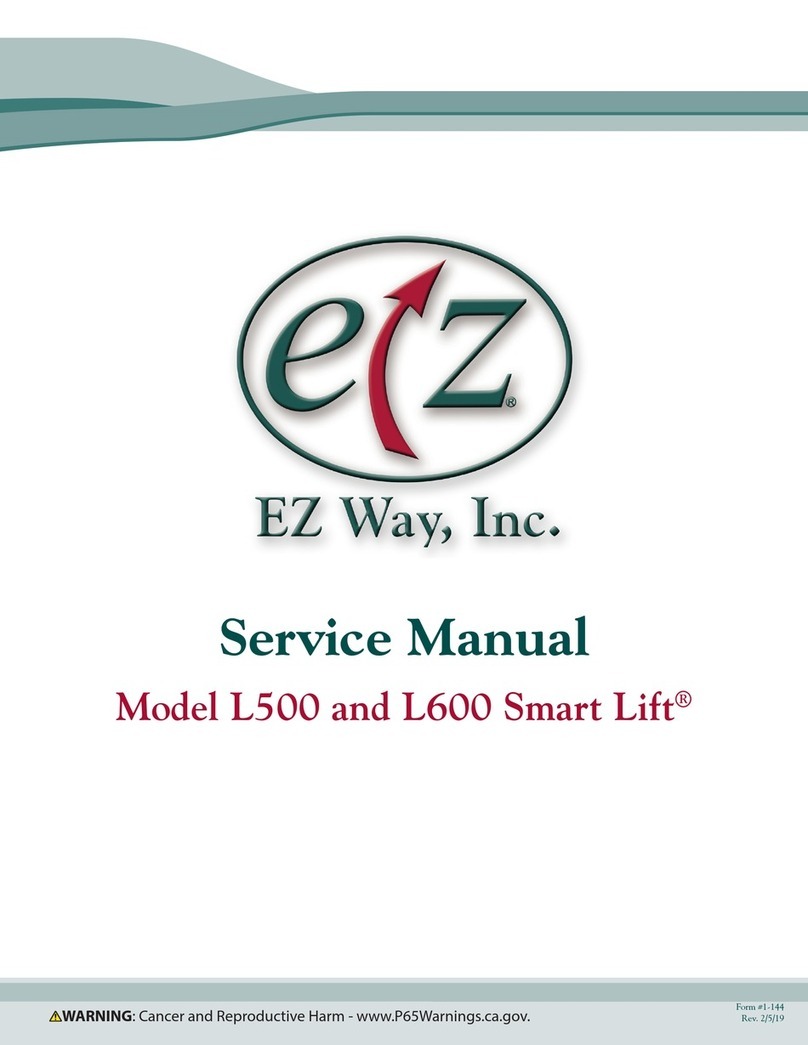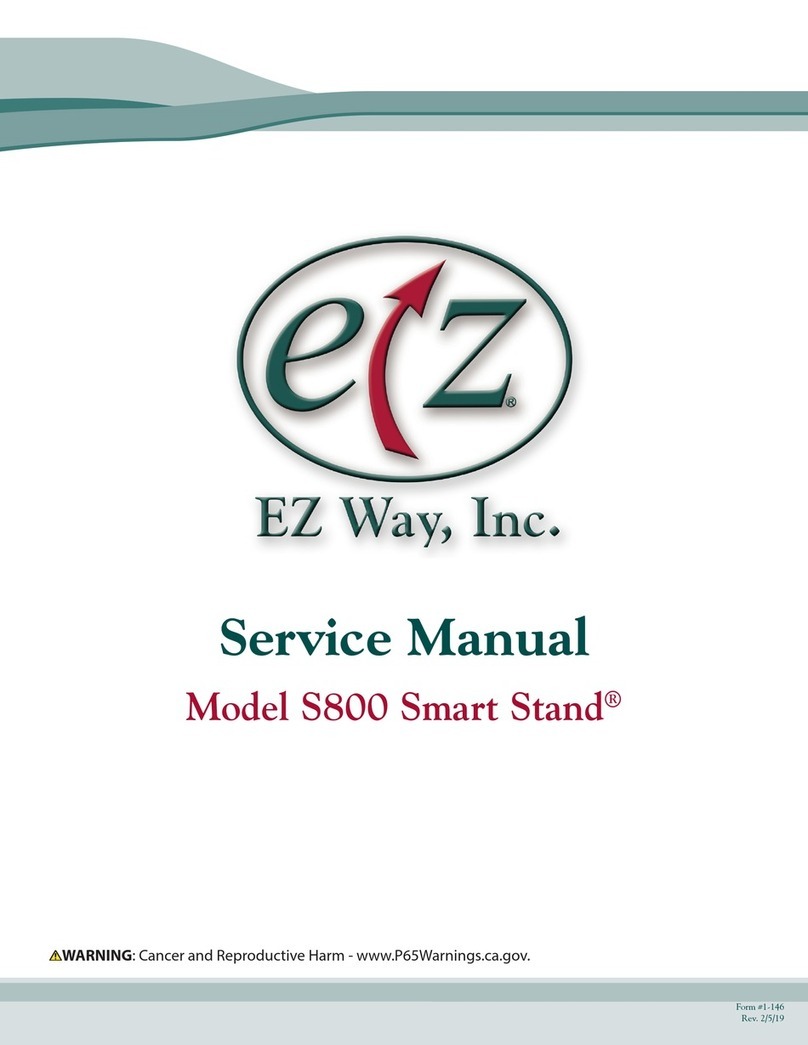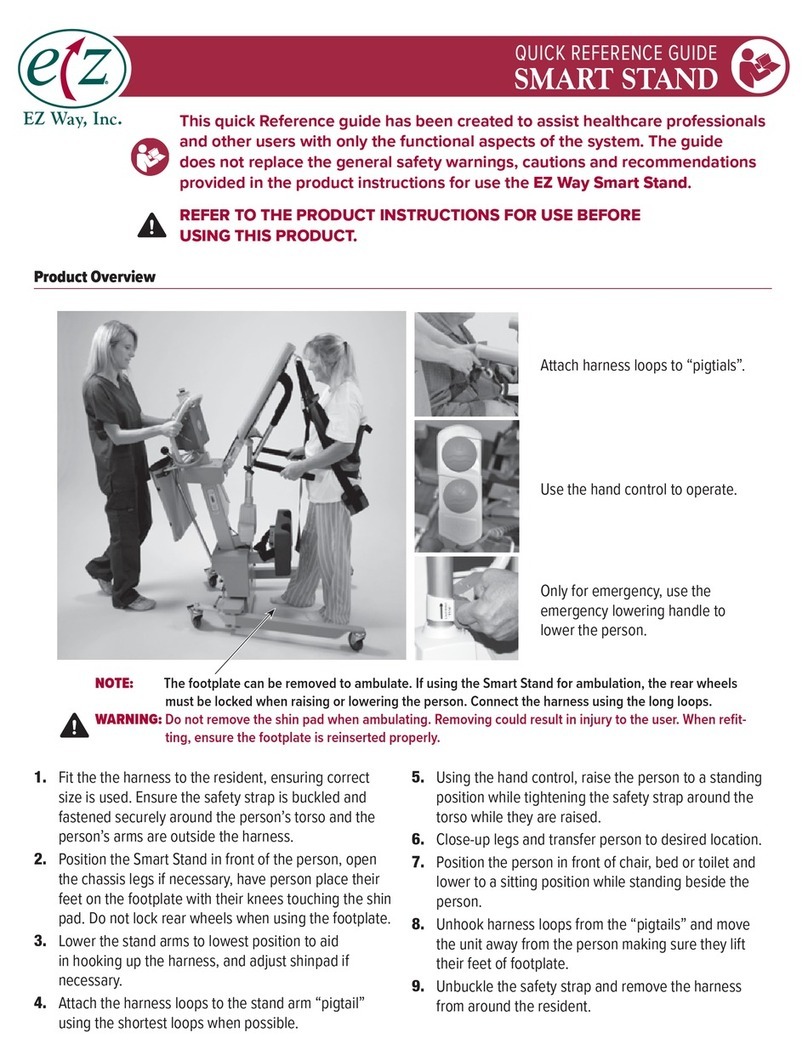
3
Unpacking and Installation
Never use a knife or sharp tools when unpacking.
This can cause damages on surfaces and the color
coating.
1. Check that there are no shipping damages. Any
damages must be solved before using the tilt
table.
2. Report any shipping damages to the transporters
and to EZ Way.
3. Check that every bolt is tightened.
Technical Specificiations
Standard Art no. 0647500
• Maximum person weight 330 lbs.
• Standard lying surface 1750 x 650 mm., solid
mounted.
• One piece, solid mounted cushion. This adapts
to any desired lying surface, to every different
patient, without having to change cushion.
• The cushion narrows down in the foot end.
• The cushion surface is made of plastic woven
fabrics of high quality.
• Stable frame in grey epoxy coating, clearance
height 150 mm.
• Permanent height in vertical position, 600 mm.
• Wide footplate (450 x 400 mm). Adjustable/
lockable in three different angle positions.
• Epoxycoated stable chassis in square tubings 50 x
30 mm.
• Strong wheels with brakes and straight steering.
External diameter 125 mm.
• Fender wheels protect the lying surfaces when
transporting through narrow doorways.
• Linak L31 actuator. Raising/lowering stroke 300 mm.
• Hand control.
• Built-in 9 Volt battery for lowering in case of
power failure. The battery needs to be replaced
after use of Overload protection.
• Basket for slings. Easy to hook off, if necessary.
• Delivered with three straps and basket.
• Optional table and foot control.
• Optional activity tray available.
Patient Handling Procedure
After being acquainted with the functions on the
EZ Classic Tilt Table, the easiest way to transfer a
patient is from a supine position. Alternately use a
ceiling lift or a floor lift.
The tilt table frame has a clearance height of 150
mm, adapted to almost every patient lifter on the
market. The tilt table has a low flat position of 600
mm from floor, allowing an easy transfer.
1. Lock all wheels. Make sure that the front wheels
are in line with the frame side and don’t interfere
with the footplate in the up tilted position.
2. Place the patient so that both feet have good
contact on the footplate. A pillow needs to be
under the patient’s head. It is preferable to have
no shoes on feet, giving a better feeling and
stimulating the blood circulation.
3. Set the desired angle on the footplate. Three
alternative positions are available. Make sure the
footplate locks securely in its proper position.
4. Fixate the chest with the thin sling belt,
enclosed. The sling belt should be placed under
the arms and around the chest.
5. Attach the sling belt in the loops and tighten,
giving good support and good fixation. Do the
same with the hip sling belt.
6. Place a small half rounded pillow under the knee
joints so they are bent a little.
7. Place the wide sling belt over the knees with one
over and one under knee joint. Tighten.
8. Mount the table (option) if this is going to be
used. The table should not replace the chest sling
belt before you are sure that the patient is stable
in the hip area.
9. Keep eye contact and put one hand on the
patient’s shoulder. Raise a few degrees and allow
the patient to get used to the position. Step by
step, increase the raising angle. End the training
session after approximately 15-20 minutes.
The patient will get tired, so shorter training
sessions are preferable in the beginning.
You can also develop and extend the training in
combination with a pulley, hand weights, training
rubber bands or other similar devices.
Record the achieved training time and angle
positions for each patient. The angle indicator is
located on the backside of the lying surface.

























